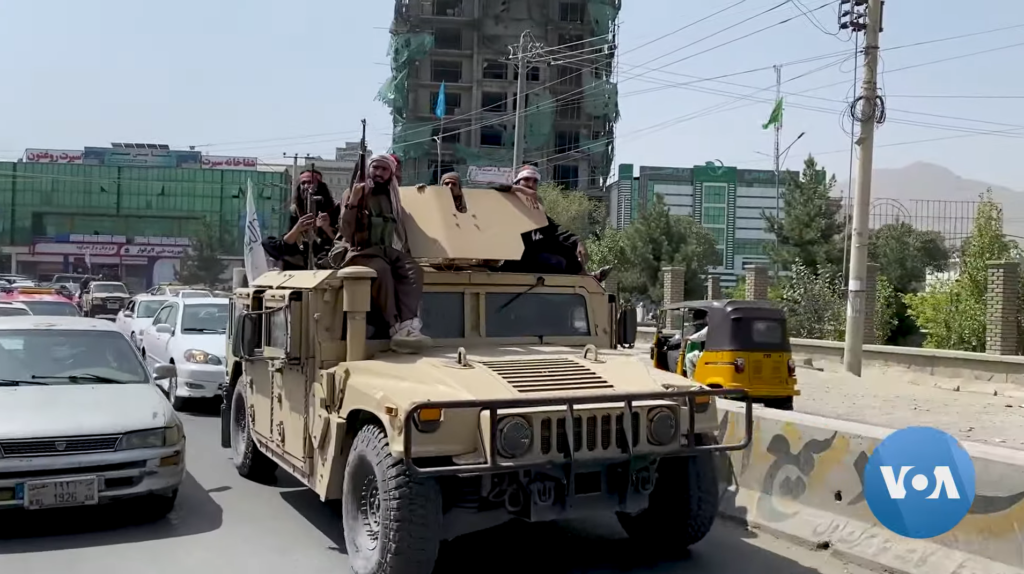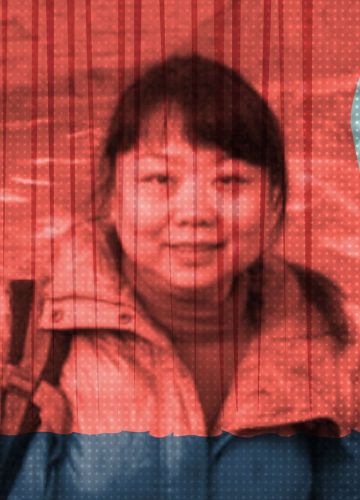China’s Growing Presence in Afghan Media

Dalia Parete

Hazrat Bahar
The Afghan media landscape has undergone a dramatic transformation since the Taliban’s return to power in 2021 and the subsequent withdrawal of US forces. Once a vibrant sector with over 11,000 journalists and media workers, the industry now faces significant challenges. The Taliban’s strict control over media operations has led to the closure of more than half of the country’s media outlets and many journalists, particularly women, have been forced out of their jobs, creating an environment of fear and repression for those who remain.
In this context, China’s media engagement, particularly under the Taliban regime, reflects a strategic approach that aligns with its broader regional interests. While China’s media presence in Afghanistan has been comparatively modest, it has made notable inroads through support for local Pashtun media networks and leveraging its own media channels to project a favorable image of the Taliban.
Last week, CMP’s Dalia Parete sat down with Dr. Hazrat Bahar to discuss the Afghan media landscape, the role of Chinese media in the country, and how they have been managing the challenges and constraints they face. When Kabul fell under Taliban control in August 2021, Dr. Bahar was on the ground in Afghanistan’s capital city, in the midst of writing his Ph.D. dissertation about the impact of social media on public policy. He is now based in Leipzig, Germany.
Dalia Parete: By some estimates, the media sector in Afghanistan flourished after the fall of the Taliban in 2001, with a significant increase in the number of media outlets and journalists. At its peak, Afghanistan had 597 active media outlets and over 11,000 journalists, supported by international investments and a growing civil society. Is that a fair assessment of the state of things in Afghanistan up to 2021? How did the media landscape in Afghanistan evolve before the latest Taliban takeover?
Hazrat Bahar: It’s helpful to look back at the media situation before the Taliban took over in 2021. Before 2001, during the Taliban’s first rule, Afghanistan had very limited media. There was only one government-controlled radio station and a few newspapers and magazines, mainly in Kabul. After the Taliban’s fall in 2001, the media in Afghanistan expanded rapidly and became much more democratic, a change the country had never seen before.
The international community, particularly the United States, invested heavily in Afghanistan—nearly 1 billion dollars with over 800 million dollars coming from the US. These investments significantly boosted and diversified the media landscape. By 2004, Afghanistan’s new constitution supported a free press, and a media law passed in 2009 reinforced this by guaranteeing freedom of speech and the establishment of media outlets.
At one point, there were reportedly over 1,000 media outlets, though officially only around 600 were operational. Many outlets were short-lived, created for specific projects and ending when those projects did. Despite this, the media in Afghanistan was quite accessible and able to criticize the government and hold it accountable, even questioning high-ranking officials.
At one point, there were reportedly over 1,000 media outlets, though officially only around 600 were operational.
However, this freedom came with risks. Journalists faced threats, arrests, and torture from various sources, including the government, international forces, and insurgent groups like the Taliban and Daesh. Despite these challenges, the media enjoyed significant freedom and a strong regulatory framework during those two decades, marking a notable period of media progress in Afghanistan.
Dramatic Changes
DP: The media landscape in Afghanistan has undergone significant transformations, particularly following the Taliban’s return to power in August 2021. What are the primary challenges facing journalists in Afghanistan today?
HB: After the international community withdrew and the Taliban took control, there was a significant shift in governance, freedom, and media conditions. The Taliban understood the media’s influence and imposed strict, ongoing restrictions, which are still in place today. These restrictions create numerous obstacles for journalists in Afghanistan. Many media outlets cannot cover sensitive topics deemed off-limits by the Taliban. Journalists often practice self-censorship to avoid risking their lives, as those who report on restricted topics face severe consequences, including torture and arrest.
International media outlets like BBC, VOA, Deutsche Welle, and even Chinese media such as CRI can no longer broadcast their content in Afghanistan. The financial support for media, once provided by international aid and local advertising, has significantly diminished, leading to reduced staff and limited coverage.

Additionally, many experienced Afghan journalists fled the country after the takeover, leaving a void filled by less-trained individuals. This has led to a lack of critical journalism, with some new media voices supporting the Taliban rather than challenging it. Consequently, the portrayal of Afghanistan from the outside may seem misleading compared to the reality on the ground, as shared by those who remain in the country. There are considerable challenges related to media access, freedom of speech, and censorship under the Taliban, which enforces a strict boundary on what can be reported.
DP: Do you think the withdrawal of the United States impacted the media landscape in Afghanistan?
HB: Yes, the impact of the US withdrawal and the regime change in Afghanistan has been profound. With the new government, everything has shifted, including media and freedom of speech. For example, in the provinces, women are not allowed to work in the media, and their voices are even banned from being broadcast on radio. In some areas, women’s voices are restricted from live broadcasts — a stark contrast to the previous situation where women were free to work and present in the media.
Many experienced Afghan journalists fled the country after the takeover, leaving a void filled by less-trained individuals.
Protests, particularly those led by women, are not allowed, and media coverage of such events is heavily restricted. The media is also barred from reporting on attacks by armed opponents or ISIS activities unless they are major incidents. Many smaller incidents go unreported.
Although the Taliban claims to uphold media laws, they are not enforced in practice. The Taliban’s actions contradict their statements about media freedom. A new, practical media law that the Taliban would adhere to is needed. It might be helpful to involve international experts in drafting a new law more likely to be implemented effectively.
Access to information is also a significant issue. Journalists often face difficulties obtaining the information they need, as the Taliban controls the flow of information and is not responsive to requests. This situation hampers critical and investigative journalism in Afghanistan.
Separate Spaces for Women
DP: Could you explain the situation in Afghanistan for women in the media?
HB: Gender did not previously impact a journalist’s ability to work freely in Afghanistan. Both men and women could report on various topics without major issues, but traditional customs somehow restricted their work or attire. However, there have been significant restrictions on women in the media since the regime change.

Initially, the Taliban mandated that women and men work in separate spaces. Later, they imposed further restrictions, requiring women to wear masks while working. In the provinces, women have been almost entirely removed from the media landscape, with additional bans on women being broadcast.
These restrictions extend to education as well; women are currently barred from studying at universities and receiving media training in Afghanistan. This systematic approach effectively limits women’s participation in media. As a result, once the current female journalists leave the country, Afghanistan may face a severe shortage of women reporters.
Currently, around 60 percent of journalists have lost their jobs, with 80 percent of those being women. This has led to a significant reduction in female journalists. Although there is an increase in female bloggers, their content often avoids criticism of the regime. It may even indirectly support it, giving a misleading impression of the situation in Afghanistan.
Laws and Regulations
DP: With the current laws and regulations that journalists face when reporting, is it still possible to do professional journalism?
HB: Currently, there are no formal laws governing media. Instead, the Taliban has introduced various directives and rules that journalists must follow. Although there is a commission intended to handle complaints and promote access to information, it has not improved media access. If someone refuses to share information, there is no mechanism to address or report this non-compliance.
The Taliban has issued around 11 directives outlining what media can and cannot report. These rules largely restrict reporting on internal Taliban affairs, including corruption within their ranks. Reporting on issues that might negatively impact the Taliban’s image, such as security concerns or internal conflicts, is also prohibited.
The situation is further complicated by the need for more unified regulations nationwide. Media conditions can vary significantly from one province to another. For example, media freedom is generally better in the northern provinces, like Mazar or Kunduz, compared to the southern and eastern regions, where restrictions are stricter. In Kandahar, where the Taliban leadership is based, media restrictions are particularly severe.
In Kabul, the situation may appear relatively better, partly because the presence of foreigners makes it essential to project an image of media freedom. However, this does not reflect the reality in the provinces, where journalists face intense self-censorship due to unclear and inconsistent regulations. The lack of clear guidelines creates fear among journalists, who are uncertain about what content might be considered risky or acceptable. This fear leads to self-censorship, as journalists avoid reporting on topics that might provoke an adverse reaction from the Taliban.
Overall, the regulations are vague and open to interpretation, contributing to a climate of fear and uncertainty among journalists. The Taliban’s approach appears to intentionally create this ambiguity to suppress bold reporting and maintain control over media narratives.
DP: What barriers do Afghan citizens face in accessing accurate and reliable information?
HB: Access to media and information in Afghanistan is a significant issue. The public is largely exposed to government propaganda, whether through state media or pro-regime bloggers. Critical media is scarce for several reasons. International media faces restrictions, and the available online media is limited by low internet penetration. Less than 18 percent of Afghans have internet access and only about 11-12 percent use social media.
Due to heavy censorship, local media cannot produce accurate or critical information. This lack of diverse perspectives means that people mostly rely on the Taliban’s narrative and what is propagated by supportive bloggers. The public sphere is thus highly controlled, with limited opportunities for critical discourse.
Attempts to provide critical information from outside the country are often met with hostility. Those who challenge the Taliban are frequently labeled as foreign agents or traitors, further stifling dissenting voices. This environment fosters misinformation and disinformation, reinforcing the Taliban’s narrative and suppressing alternative viewpoints.
Additionally, Afghanistan's limited media literacy makes it difficult to differentiate between propaganda and accurate information. This contributes to the Taliban’s ability to control public perception, as people tend to accept at face value what they see and hear.

China's Role in the Region
DP: Media engagement has been an essential way for China to influence countries in the region. Are you seeing media engagement by China with the Taliban? What impact, if any, do you think engagement like this is having?
Hazrat Bahar: In the past, the media sector in Afghanistan was heavily influenced by the Western and international communities, with significant investment and involvement, though China also played a role. While Western countries and regional players like India were prominent, China’s involvement was limited and was involved in two main ways.
First, China supported Afghan media networks, such as Shamshad Network and Axon Media Network. Shamshad Network received some support from China, while Axon Media Network, which included outlets like Spogmai Radio, also had ties to Chinese backing. These networks primarily operated in Kabul.
Second, China had its own media presence in Afghanistan. China Radio International (CRI) Pashto contracted with Spogmai Radio, part of the Axon Network, broadcasting CRI’s programs twice daily in Kabul and Kandahar. CRI Pashto’s social media page gained significant traction, with over three million followers, which is notable compared to many popular Afghan media outlets.
Additionally, China Global Television Network (CGTN) produced and is still producing content about Afghanistan, mainly in English. Kabul News Television created a documentary about the Belt and Road Initiative in Afghanistan in 2017. While China’s involvement was less extensive compared to the Western community, it still made notable contributions to Afghan media and provided training for Afghan journalists in China.
DP: Are there any concerns or reservations among Afghani journalists regarding their relationship with Chinese media?
HB: Afghan journalists were cautious about forming close relationships with China. For instance, I spoke with the owner of a prominent Afghan media outlet while researching a chapter on China’s media involvement in Afghanistan. He shared that many journalists avoided visiting the Chinese embassy out of fear that their presence might be noticed by Western diplomats, who might view it unfavorably. This concern was compounded by India's support for Afghan media and the ongoing tensions between India and China, as well as between China and Western countries.
Additionally, China's support for Afghan media was relatively limited and targeted. They mainly supported media outlets ideologically aligned with China or critical of Western involvement in Afghanistan. This selective support may have contributed to the Afghan media's limited interest and involvement in China.
DP: How does Chinese media coverage of the Taliban and its regime in Afghanistan differ from that of Western media, and what impact might this have on the perception of China in Afghanistan?
HB: Even now, Chinese media continues to support the current Afghan regime. They use carefully chosen terms to describe the situation, such as "the acting government of Afghanistan," instead of referring to it as the "Taliban regime" or similar terms. This terminology aligns with the language used by Chinese officials and reflects the close relationship between China and the Taliban. Unlike Western media, which often has a critical stance, Chinese media portrays a more positive image of the Taliban.
Unlike Western media, which often has a critical stance, Chinese media portrays a more positive image of the Taliban.
Chinese media coverage emphasizes security and development, often attributing any negative issues in Afghanistan to international involvement while crediting the Taliban and Chinese investment for improvements. They downplay concerns about human rights and women's rights, framing these issues as internal matters of each country and not areas for external criticism.
DP: Generally speaking, how do the public and media audiences view China?
HB: From my analysis of Chinese media coverage over the past two decades, China has been viewed positively in Afghanistan. Even though China’s media presence is not as prominent as that of international outlets like BBC or VOA, the general perception of China remains favorable. Chinese media has been less active in promoting its interests compared to its Western counterparts, but it has still maintained a positive image in Afghan media.
Recently, Chinese media has increased its engagement with high-ranking officials in the Afghan government, as reported by both Afghan and Chinese media. Despite this, the Taliban has restricted international media, including Chinese outlets like China Radio International (CRI), from broadcasting within Afghanistan. For example, CGTN attempted to livestream the International Olympic Games in 2013 but was unsuccessful due to these restrictions.
Overall, while Chinese media continues to have a significant presence and influence, particularly among Pashtun communities in Afghanistan, the Taliban’s restrictions on international media limit their ability to operate freely.
DP: How has China targeted its media outreach in Afghanistan, and is there any notable difference in how it is received by different ethnic groups?
HB: The Chinese media networks I mentioned are primarily owned by Pashtuns, reflecting a strong China-Pashtun connection. I found no evidence of Chinese support extending to non-Pashtun media outlets. For instance, the CRI Pashtu page is quite popular in Afghanistan, whereas the CRI Persian page has much less engagement. This indicates that Chinese media is specifically targeting the Pashtun population, which, in turn, shows a greater interest in Chinese media.
Regarding Chinese language media, I haven’t seen any Chinese-language publications aimed at the Chinese-speaking population in Afghanistan. There is also a Confucius Institute in Kabul that teaches Chinese, but I haven’t seen any media or content published exclusively in Chinese. Before the government's collapse, there were some private Chinese language courses in Kabul, largely driven by economic ties with China.
Many Afghans who travel to China for business or education learn Chinese primarily for practical reasons, but I haven’t observed any significant presence of Chinese language content in Afghanistan. Most Chinese language materials sent by CRI were brochures and promotional items for their regular listeners.

Dalia Parete








